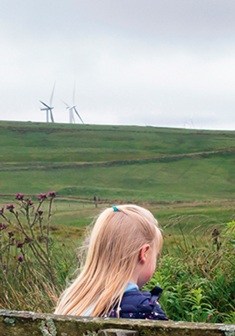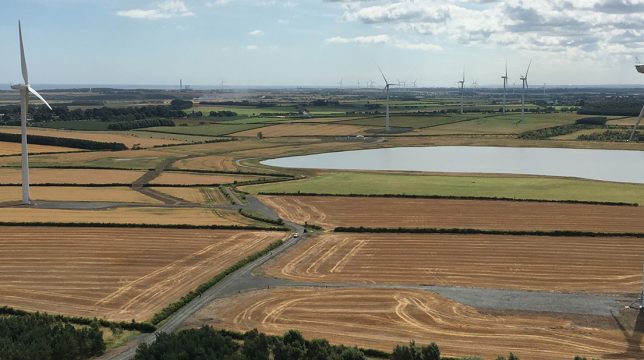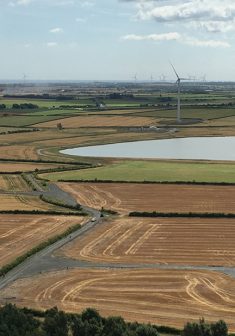COP27, which recently concluded in Sharm El-Sheikh, Egypt, was considered one of the most important climate conferences to date. With world economies still feeling the effects of both COVID-19 and the Ukrainian conflict, and European and global food and energy markets plunged into chaos, this was a chance to address the platform for progress and issues needing to be taken in hand from COP26, and to reinforce commitments in the fight against climate change.
The unique global backdrop both amplified the challenges for negotiators and decision makers at this years’ conference, and simultaneously presented an opportunity to show unity and cooperation at a time when they were most needed, but there was little doubt COP27 needed to be about implementation.
What were the hopes?
The current NDC (Nationally Determined Contributions) forecast has already reached 2.4 degrees, well beyond the original 1.5-degree target set by the Paris Agreement and, unless action is rapidly implemented, even this higher forecast may prove beyond reach. There was a need for all countries to strengthen their NDC emission targets and back them up with robust plans, policies and investment in line with the increasingly ambitious commitments and components of those NDCs.
We also hoped to see mechanisms established to ensure the $100 billion climate finance package would be delivered in 2023 as well as clear direction on future financing mechanisms for climate related loss and damage to those most vulnerable to the effects of climate change.
In general, the hopes for COP27 were centred on seeing the array of ambitious commitments set out during COP26 being realised and delivered as promised.
What were the wins?
The biggest win was also the last delivered during the conference, and potentially changed the tone to a more positive one; the establishment of a Global Loss and Damage Fund. This provides critical finance to the world’s most climate-vulnerable countries. In short, the richer, more protected nations will provide funds to clean up the impacts of climate change on vulnerable countries around the world.
After being sought for nearly three decades, receiving constant push back and being the subject of long-drawn-out negotiations, this is certainly a major milestone, and the finance it provides will be crucial for climate change hotspots to rebuild the physical and social infrastructure damage caused by extreme weather.
There are still many unknowns – including the framework for exactly how the money will arrive, from whom and in what timescales – with the details left to be negotiated in the run up to, and at, COP28. We trust this will happen.
And the failures?
The final COP27 text does not include a commitment to peak global emission by 2025, leading to what many are calling a significant missed opportunity to limit global temperature rises, and meaning the 1.5-degree target is now all but lost.
Indeed, a number of countries and delegates at COP27 actually tried to abolish the 1.5-degree target at the conference despite the UN stating that devastating climate-related impacts will occur above this temperature, and a resolution within the text to cap emissions by 2025, and therefore keep the target alive, was removed towards the end of negotiations.
The conference also failed to deliver on more stringent text relating to the phasing out of fossil fuels, in particular coal. This was already a major misstep at COP26, with the wording of the text being altered in the last moments from ‘phase out’ to ‘phase down of unabated coal’ – a significant difference – and with the wording in the final COP27 agreement including statements such as ‘low-emission energy’, this still leaves the door open for fossil fuels such as gas, claimed as a ‘low emission’ alternative to coal, being exploited across the world. Whilst challenging to agree on such wording, especially given the position of countries looking to exploit their natural resources, the loose text around fossil fuel phase-out could be extremely damaging to the hopes of limiting global emissions.
The conference was said to be attended by more delegates and representatives with fossil fuel links than any other COP in history and this, along with the outcomes of the negotiations, calls into question the efficacy of COPs moving forward. Indeed, the BBC reported that “the crammed pavilions felt at times like a fossil fuel trade fair. This influence was clearly reflected in the final text”.
Moving forward, backward, or just standing still?
As usual, it’s a bit of everything. The outcomes of COP27 feel more focused on dealing with the consequences of climate change, rather than dealing with its root causes. The Global Loss and Damage Fund is undoubtedly an important step, but unless more is done to curb emissions, this simply won’t be enough.
It could also be time for a change in how COPs are run, with fewer attendees, a stronger focus on hard negotiations, and less opportunity for industry lobbying and greenwashing.
With specific regard to the industries and countries where Ventient is present, it’s clear that renewables, and in particular wind, solar, and storage, will have a critical and accelerated energy transition role to play along with facilitating their more efficient system integration. The outcomes of COP27 don’t change that.
There is continued support and momentum building for wind, and wider renewable energy, as a means of increasing energy security and supply chain stability, with ambitious renewable energy targets still in place across all regions we operate in. Ventient is well positioned to deliver on the current NDCs and can continue to advocate for even more ambitious commitments at COP28. We target deploying significant capital and expertise to deliver, and we will also work to ensure we continue to engage with governments who have to foster an environment of investment for the Just Transition, ensuring security is achieved.
Our overriding goal remains that of generating renewable energy to secure the future of people and the planet, and we will continue to advocate for action in fighting climate change, leading by example with total commitment.
Author:
Mark Jones, Chief Executive Officer
For further information on Ventient Energy, please contact:
Camilla Barlocco
Brand & Stakeholder Manager at Ventient Energy
T: +44 (0)131 252 1455
E: camilla.barlocco@ventientenergy.com
4th Floor, 12 Blenheim Place, Edinburgh, EH7 5JH
T: +44 (0)131 243 1380
E: info@ventientenergy.com
Cover image by Matthew TenBruggencate on Unsplash


More News


The natural next step – A new name for Renantis & Ventient Energy
Last summer, we announced that Renantis and Ventient Energy would join forces to form one of the largest renewable independent power producers (IPPs) in Europe. Today, we are proud to announce that this summer, the two companies will become Nadara.


Ventient Energy celebrates the approval of 10-year life extensions across six of its operating wind farms
Ventient Energy secures the operation of six sites in Scotland and England for 35 years.


